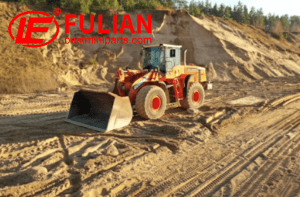Certainly! Think of an excavator’s rubber tracks as a marathon runner’s shoes. A runner picks his shoes for endurance and comfort over long distances. Likewise, an excavator’s tracks are made for the long haul—but how long do they actually last?
Typically, the durability span of rubber tracks on an excavator ranges from 1,200 to 2,000 hours of operation, give or take. It’s like running shoes: you can get a few hundred miles out of them, but not all shoes hit the same mileage. It all hinges on the conditions they’re used in. Let’s break it down for clarity.
The Terrain: Like a runner tackling different terrains, an excavator works across various ground conditions. Tracks will degrade quicker on a rough, stony site than on a flat, sandy surface. If you’re mostly tackling gentle terrain, you’ll get more hours out of your tracks.
The Usage: Frequency and intensity of use are like our runner’s training schedule. An excavator running double-shifts on a construction site will see its tracks wear out much quicker than one used sporadically for light work.
The Weight: Just as a runner’s weight affects shoe wear, the load carried by an excavator affects its tracks. Heavy loads mean more strain and quicker wear.
Maintenance Practices: If you keep your running shoes clean and dry, they last longer. The same goes for rubber tracks; with regular cleaning, proper tension, and keeping an eye out for early signs of wear, you can stretch their lifespan.
Weather and Environment: Shoes worn in harsh conditions break down faster, and excavator tracks are no different. Extreme temperatures can make rubber brittle or too soft, which may lead to faster wear.
Driver Habits: A runner’s style—like striking heavily on their heels—can wear shoes unevenly. For excavators, if the operator is harsh with the controls, making sudden turns or stops, the tracks will suffer.
In short, while there’s a standard range for durability, the actual lifespan of rubber tracks is a product of conditions, use, and care. With thoughtful operation and diligent maintenance, you can edge closer to the upper limit of that 2,000-hour mark—perhaps even surpass it. It’s about balancing the workload with the wear and tear, just like pacing oneself in a long-distance race.
Fulian Operation Team
2024.6.18








